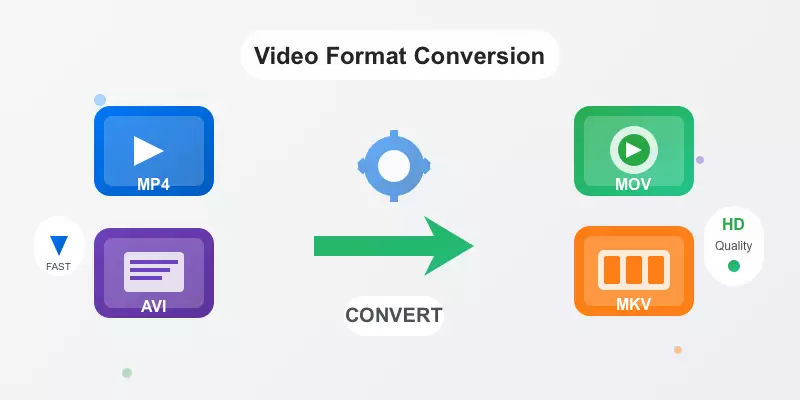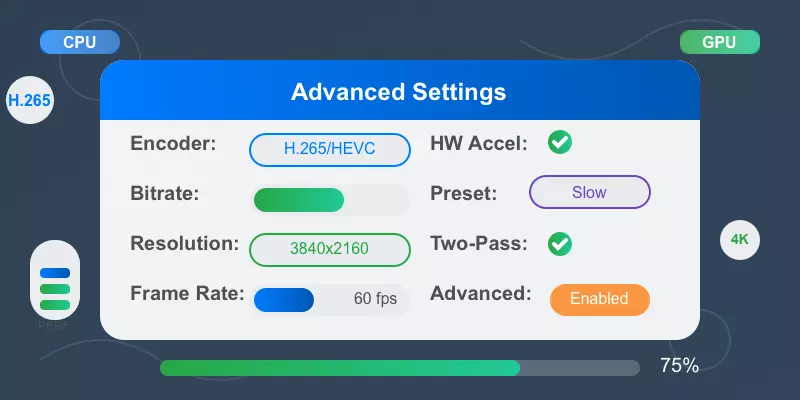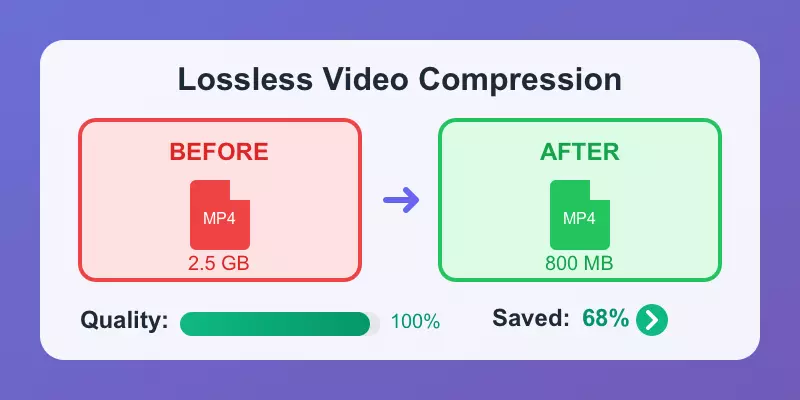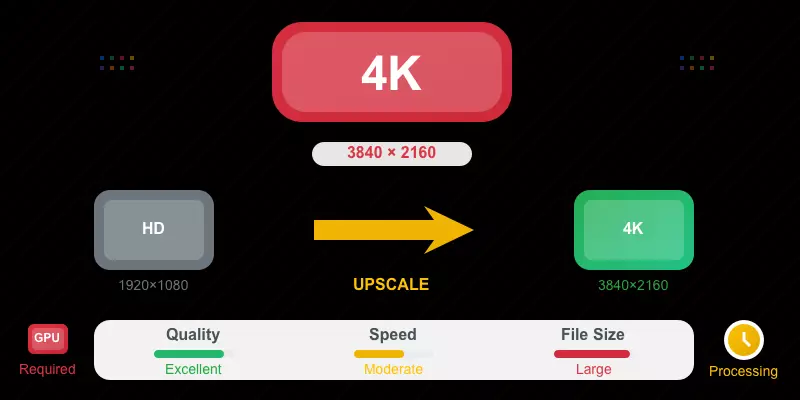MP4 Video Format
Comprehensive articles and resources about the MP4 video format, including conversion techniques, compression optimization, compatibility guides, and best practices for digital video.
Articles Tagged with "MP4"
How to Convert Videos to Different Formats
Learn how to convert videos between different formats including MP4, AVI, MOV, and more. Step-by-step guide with best practices and quality optimization tips.
Read MoreUnderstanding Video Codecs: H.264 vs. H.265 vs. AV1
Compare the most popular video codecs used in MP4 containers. Learn about their compression efficiency, compatibility, and best use cases for different scenarios.
Read MoreAdvanced Video Conversion Techniques
Master professional video conversion settings, codecs, and optimization techniques for superior MP4 results. Learn about hardware acceleration and quality optimization.
Read MoreHow to Compress Videos Without Losing Quality
Learn professional techniques to compress MP4 videos without sacrificing quality. Discover the best settings, tools, and methods for achieving optimal compression results.
Read More4K Video Conversion: Best Practices and Settings
Master 4K MP4 video conversion with optimal settings, hardware requirements, and techniques for maintaining ultra-high quality while managing file sizes effectively.
Read MoreLossless Video Compression Guide
Master the art of lossless video compression for MP4 format. Learn about advanced codecs, settings, and techniques for preserving maximum quality.
Read MoreLearn More About MP4
About MP4 Video Format
MP4 (MPEG-4 Part 14) is the world's most popular video container format, developed by the Moving Picture Experts Group (MPEG). Since its standardization in 2001, MP4 has become the de facto standard for digital video due to its exceptional compatibility, efficient compression, and versatile codec support. From smartphones to streaming platforms, MP4's universal adoption makes it the go-to choice for video content across all devices and platforms.
Universal Compatibility
- Device support: Works on every device and platform
- Browser native: Plays directly in all web browsers
- Streaming ready: Optimized for progressive download
- Hardware acceleration: Built-in support across all devices
- Legacy compatibility: Backwards compatible with older systems
Industry Standard
- Streaming platforms: Netflix, YouTube, Amazon Prime
- Social media: Facebook, Instagram, Twitter, TikTok
- Mobile devices: iPhone, Android default recording
- Professional video: Broadcast, cinema distribution
- Web content: HTML5 video standard format
Technical Specifications
Video Codecs
- H.264/AVC (most common)
- H.265/HEVC (4K/HDR)
- AV1 (next-generation)
- MPEG-4 Visual
- VP9 (limited support)
Audio Codecs
- AAC (Advanced Audio Coding)
- MP3 (legacy support)
- AC-3/E-AC-3 (Dolby)
- DTS (surround sound)
- PCM (uncompressed)
Container Features
- Multiple audio tracks
- Subtitle support (SRT, VTT)
- Chapter markers
- Metadata embedding
- DRM protection support
MP4 Evolution & Future
Current Dominance
MP4 handles over 90% of all video content worldwide, from mobile recordings to professional streaming services
Future Outlook
Continues evolving with new codecs (AV1, VVC) while maintaining backwards compatibility and universal support
Why MP4 Remains King
Despite newer container formats, MP4's combination of universal compatibility, mature ecosystem, hardware acceleration, and proven reliability makes it the safest choice for any video project. Its ability to adapt to new codecs while maintaining backwards compatibility ensures MP4 will remain relevant for years to come.




